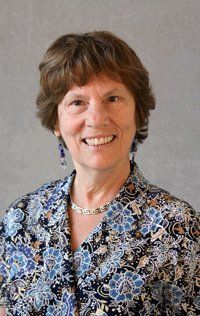 |
|
| Arlene Ash, PhD |
A new study by UMMS researchers finds that severe mortality-associated diseases are less prevalent in families of long-lived individuals than in the general population. These results arose from the Long Life Family Study (LLFS)—an international collaborative study of the genetics and familial components of exceptional survival, longevity, and healthy aging. Results of the study, Are Members of Long-Lived Families Healthier than Their Equally Long-Lived Peers? Evidence From the Long Life Family Study, were published March 5 in The Journals of Gerontology, Series A: Medical Sciences.
Arlene Ash, PhD, professor of quantitative health sciences and chief of the Division of Biostatics and Health Services Research; David Hoaglin, PhD, professor of quantitative health sciences; Aimee Kroll-Desrosiers, MS, and colleagues from UMass Medical School; and researchers at Boston University and the University of Southern Denmark found that seven conditions were significantly less common for siblings in a long-lived family than for similarly aged controls. Those conditions include: Alzheimer’s, hip fracture, diabetes, depression, prostate cancer, heart failure and chronic kidney disease. Somewhat in contrast, the LLSF siblings were more likely to be receiving care for arthritis, cataract, osteoporosis and glaucoma. Spouses, offspring and offspring spouses of these long-lived siblings share in significantly lower risk for Alzheimer’s, diabetes and heart failure.
“Thus, both genetic and environmental factors appear to be in play,” said Dr. Ash, professor of quantitative health sciences and chief of the Division of Biostatics and Health Services Research.
“Since most of the offspring generation are not yet 75 years of age, it will be fascinating to see whether early evidence for a health advantage in both genetic and marital relatives of long-lived families strengthens as the cohort ages.”